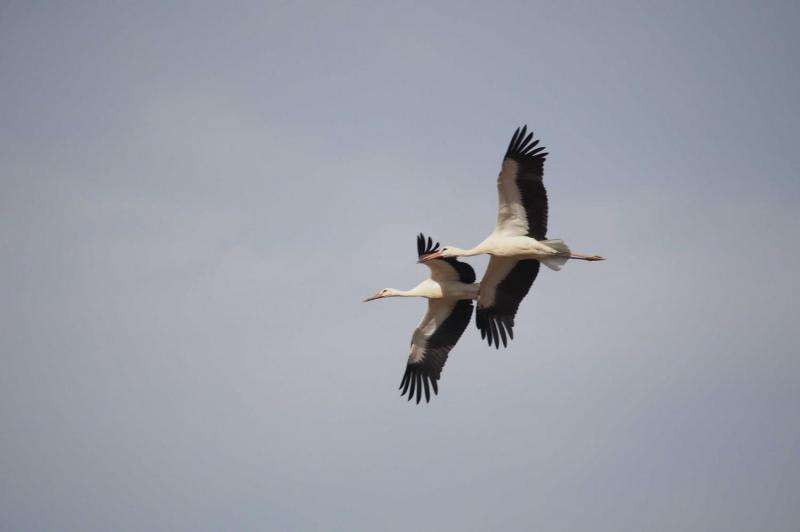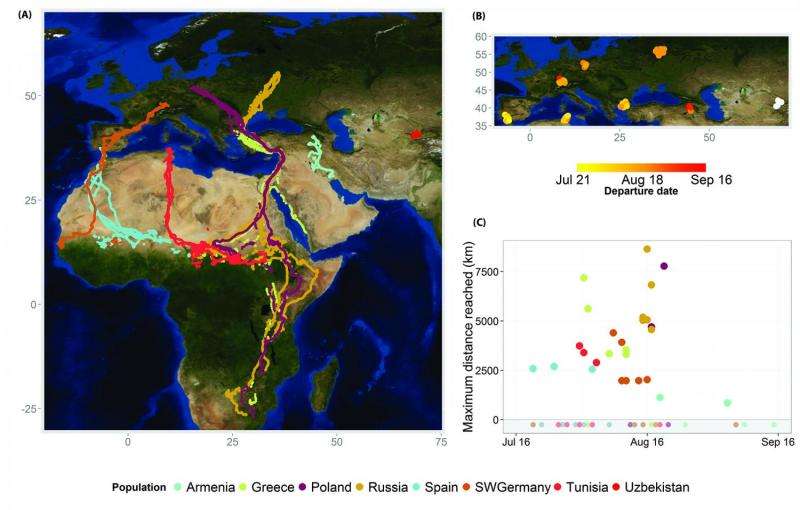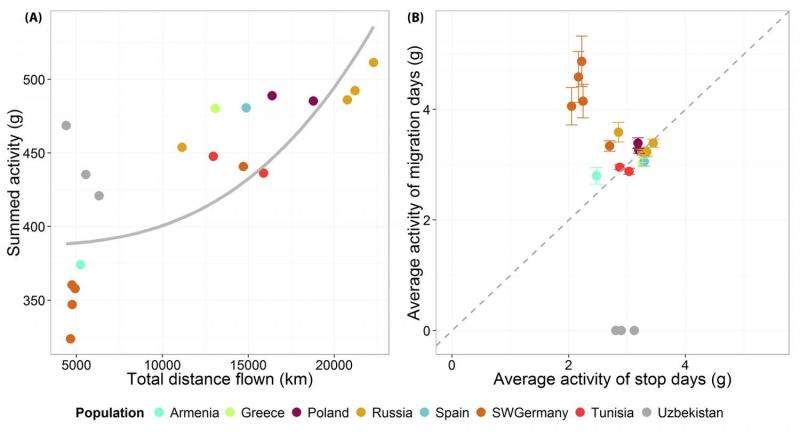January 25, 2016 report
White storks found to be altering migration patterns due to human environmental changes

(Phys.org)—An international team of researchers has found that many groups of white storks have begun to modify their migration patterns to take advantage of human made food sources, such as garbage dumps. In their paper published in the journal Science Advances, the team describes the study they undertook of young white storks that were born in eight different countries, their migration routes and any changes they noted from previous studies.
Birds migrate from one location to another because the food they eat is typically seasonal—they cannot find insects, for example, in the wintry north, so they fly south to where it is warmer. That is what white storks have done for as long as humans have been taking records—flying south from Europe to Africa. But now it seems, some of the changes humans have made to the environment appear to be causing the birds to rethink their migration patterns.
Migration for birds has a trade off—the farther they fly the more likely they are to die during the trip, either from the elements, or predators. For that reason, scientists have found, if migrating bird species find a way to shorten their migration route, they will take it. In this new study, the researchers affixed GPS bands to 70 wild juvenile storks born in Germany, Spain, Uzbekistan, Poland, Greece, Russia and Armenia and then tracked them as they migrated. Doing so allowed the researchers to compare current migration patterns to those that were noted in the past by prior researchers.

In studying the data, the researchers found that while storks from Greece, Poland and Russia followed their traditional routes, those from Germany, Spain, and Tunisia did not fly as far as before, stopping short of the Sahara; storks from Armenia did not fly very far, and storks from Uzbekistan did not migrate at all, instead choosing to feed on local fish farms. Those that stopped short of the Sahara appeared to do so because there was ample food in garbage dumps in Morocco.
The researchers note that the shorter migration paths is likely leading to higher survival rates, but it is still unclear what other impact it will have—migrating birds such as storks tend to eat a lot of insects, fish, frogs and other animals. It is not known how prior migration areas will be impacted by the absence of the migrating birds.

More information: A. Flack et al. Costs of migratory decisions: A comparison across eight white stork populations, Science Advances (2016). DOI: 10.1126/sciadv.1500931
Abstract
Annual migratory movements can range from a few tens to thousands of kilometers, creating unique energetic requirements for each specific species and journey. Even within the same species, migration costs can vary largely because of flexible, opportunistic life history strategies. We uncover the large extent of variation in the lifetime migratory decisions of young white storks originating from eight populations. Not only did juvenile storks differ in their geographically distinct wintering locations, their diverse migration patterns also affected the amount of energy individuals invested for locomotion during the first months of their life. Overwintering in areas with higher human population reduced the stork's overall energy expenditure because of shorter daily foraging trips, closer wintering grounds, or a complete suppression of migration. Because migrants can change ecological processes in several distinct communities simultaneously, understanding their life history decisions helps not only to protect migratory species but also to conserve stable ecosystems.
Journal information: Science Advances
© 2016 Phys.org

















